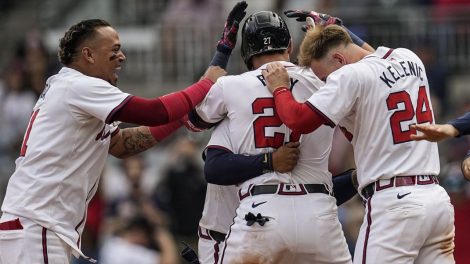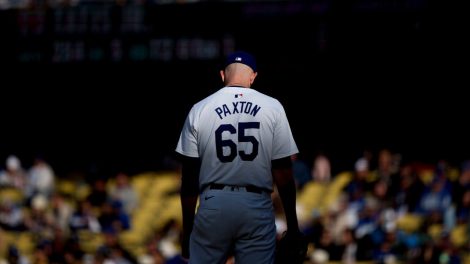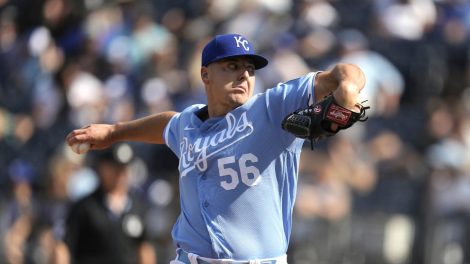Think of it as operating on two fronts.
As they enter another precarious off-season, Mark Shapiro’s and Ross Atkins’s to-do list is both obvious and obviously daunting.
First off, they have to approach ownership, suddenly in transition at the top, and make the case for added payroll, as have all Blue Jays’ bosses going way, way back. It’s a tricky conversation: How do you talk to those in charge of a publicly traded company with a foundation built in cable and phones, and convince them that they ought to invest more in the ephemeral asset that is baseball players? How do you come up with a cost/benefit analysis that can answer the question: “If we spend X, how many games are we going to win?”—which is exactly the kind of question you have to ask if it’s your fiduciary duty to protect shareholders’ interests.
But it seems possible, at least, given the glories of the past two seasons, given the way the fans flocked to the Rogers Centre and watched games on television in unprecedented numbers, that this year the purse strings might be loosened a bit, understanding that the ball club also provides more than straight bottom-line value to the company.
Once they have their number, Shapiro and Atkins will then try to reload a roster which was very good but also very old, very right-handed and offensively one-dimensional, which made it to the American League Championship Series but will no doubt regress in some areas next year, given its age, given the ridiculous good health of the starting rotation in 2016.
And they will have to do that while managing the emotional fallout that comes with two of the franchise’s legacy players entering the free market, at a point when it may make no baseball sense to pay their price and bring them back. Cue the gnashing of teeth—and the short memories of those who thought the world ended when David Price left town (or as we ancients remember, when Dave Winfield left town), who were ready to hand Jose Bautista whatever he wanted in spring training, with memories of the bat flip still so fresh.
With or without Bautista and Edwin Encarnacion, there’s a natural window for this group which closes when Russ Martin, Troy Tulowitzki and Josh Donaldson depart in a couple of years, or less. Shapiro and Atkins inherited that core, and their only real option now is to try to remain competitive over this stretch, to bridge until a time when, they hope, a sustainable model will have emerged and it will make sense to turn the page. So there will be signings and there will be trades this winter with the goal of winning now, and come spring training, there will be the realistic possibility of October baseball once again.
Meanwhile, on the second front…
You will be hearing the word “culture” a whole lot in the coming years. The new folks in charge point to a team with which they have more than a passing familiarity—the 2016 American League Champions—and will tell you that the way Cleveland plays, the way they are managed, the way they have overcome injuries and found creative ways to win baseball games, is a by-product of that organization’s DNA.
Years ago people talked about the Dodgers Way, and in the early years of the local heroes, leading up to those twin World Series victories, there was definitely a Blue Jays Way, though with ownership changes and management shuffles, it became less easy to discern as the years passed.
What happens to the Jays’ major league roster right now is understandably front of mind for fans. But Shapiro et al are at least equally occupied with the long view—drafting and development, high-performance science, the minor league system, coaching and managerial philosophies that will eventually be consistent from rookie ball right through to the big club. The Jays will soon have a refreshed spring training home, and in the not too distant future, they’ll have a remade Rogers Centre. By the time that happens, the goal is to populate Dunedin and the dome with players produced largely in-house (plus the assets in-house prospects might fetch in trade) who have come of age within that system. Combine a consistent talent pipeline with what is right now the best baseball market in North America, and with an owner that might be convinced to increasingly bank on that and make major investments when the opportunity arises, and you’d have something special.
Right now, what you see in Cleveland is the end product, and any student of that franchise’s history knows that getting there wasn’t easy or without setbacks, controversy and unease. Expect the same thing here. Sports, after all, offers precious few guarantees.
But it’s hard to argue with the goal.









